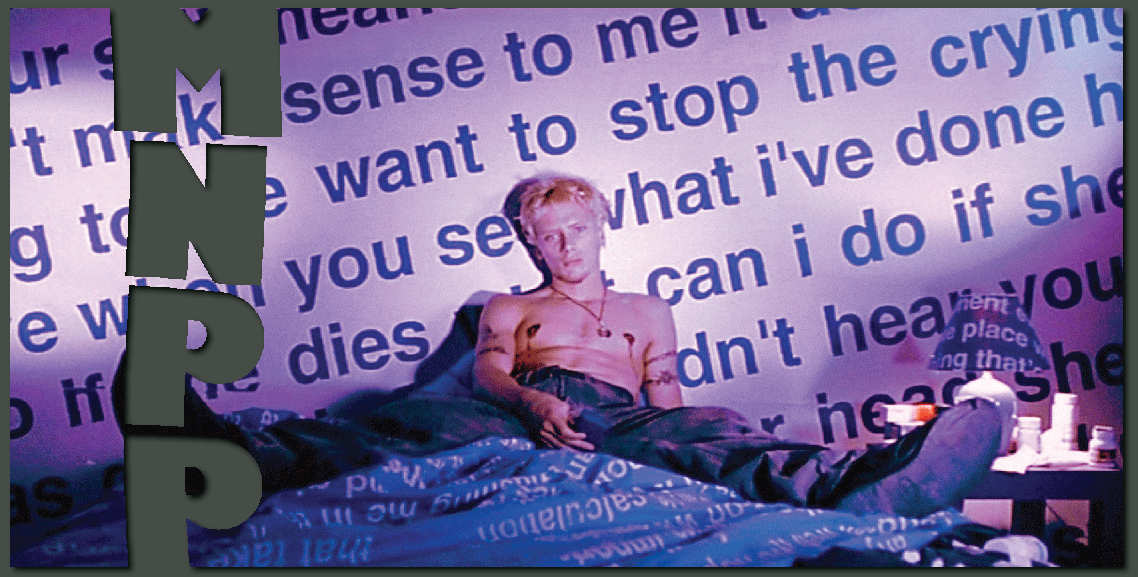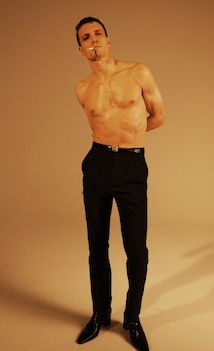.
I don't know for sure how purposeful Ruben Östlund was with his sexualization of Claes Bang in The Square -- I don't know enough about Östlund to hazard a guess, and it's entirely possible that some of this read is me projecting my limitless attraction to Bang himself onto what I'm watching -- but shots like this one, which is the opening shot of the film, make me think i'm not reading too much into the movie to think we're supposed to view Christian (that is Claes' character's name) as an object of desire.
He's framed entirely like an odalisque there, reclinsed and soft, his underbelly exposed and private parts unprotected, while a sharp pair of black heels hover behind him prepared to pounce. Oh if you only knew what was coming, dude, you'd be far less comfy.
For a man of refinement, education and artistic temperament, Christian doesn't spend as much time surrounded by books as you think he might - there's a backdrop of them in his office that we see a couple of times, including this funny scene where his entire world collapses thanks to his bad judgement...
... although narrowing this film down to one of those scenes is a laugh, given that's basically the thrust of the entire endeavor, open to close. Speaking of, a little bit later on in the film we see Christian, immediately following a bout of terrible judgement on his part, and we see another wall of books behind him...
Note how those two shots are negative inverses of one another - his office is white, his home is black, he faces left then he faces right, he leans back and he leans forward. The sequence that separates these two scenes? That would be the terrifying art dinner involving the monkey man gone rogue. (If you haven't seen this movie and that sentence reads insane to you, I must implore you to see this movie!) Anyway this switcheroo...
... from light to dark reminds me of the art-show that gives the film its title, which Christian lays out in extensive detail to his two daughters in a sequence at the heart of the film - you can choose the path of the light, of trust, or you can choose the path of the dark and distrust. Christian, ever self-interested, ends up delivering himself straight to the dumps.
For a man of refinement, education and artistic temperament, Christian doesn't spend as much time surrounded by books as you think he might - there's a backdrop of them in his office that we see a couple of times, including this funny scene where his entire world collapses thanks to his bad judgement...
... although narrowing this film down to one of those scenes is a laugh, given that's basically the thrust of the entire endeavor, open to close. Speaking of, a little bit later on in the film we see Christian, immediately following a bout of terrible judgement on his part, and we see another wall of books behind him...
Note how those two shots are negative inverses of one another - his office is white, his home is black, he faces left then he faces right, he leans back and he leans forward. The sequence that separates these two scenes? That would be the terrifying art dinner involving the monkey man gone rogue. (If you haven't seen this movie and that sentence reads insane to you, I must implore you to see this movie!) Anyway this switcheroo...
... from light to dark reminds me of the art-show that gives the film its title, which Christian lays out in extensive detail to his two daughters in a sequence at the heart of the film - you can choose the path of the light, of trust, or you can choose the path of the dark and distrust. Christian, ever self-interested, ends up delivering himself straight to the dumps.












































No comments:
Post a Comment